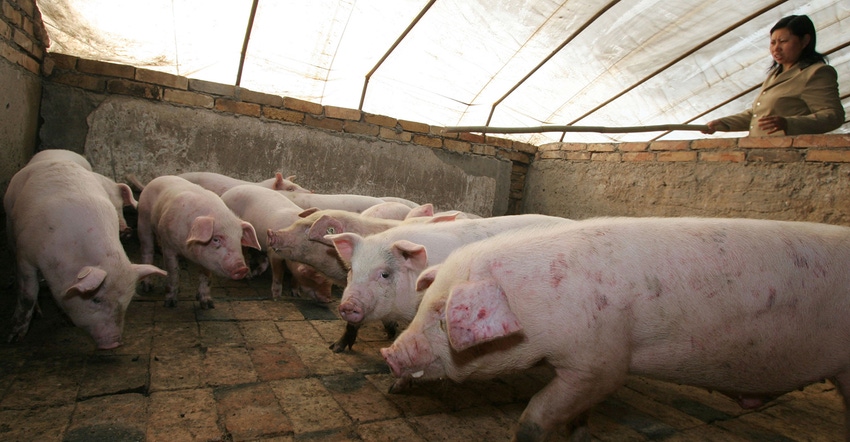What happened to the optimism in the hog market?
Our prices will better reflect global pork prices, which will be profitable for U.S. producers — as long as we can keep the disease out of North America.

In April, 2019 lean hog futures were responding to news that Chinese pork losses from African swine fever could impact 20-25% of their herd. At that time hog futures were trading at levels which, as of yet, have not been reached again.
Today, estimates for China indicate that those losses could easily reach 50% of the country’s herd and the spread of the disease to Vietnam, Cambodia, Laos, Korea and the Philippines increased the need for global pork supplies to fill demand.
Cold storage in China
One factor is the realization that farmers in China were marketing pigs from farms as quickly as they could to salvage what revenue they would bring. Much of that pork was put into cold storage facilities and probably bought an additional four or five months of available supply. This is now estimated at eight million metric tons to 10 mmt of product. Anyone with capacity knew pork prices would escalate and it would be a good investment. That turned out to be true with record-breaking current pork prices.
Extended trade war
The United States and China have been in an extended battle on trade, and tariffs on U.S. pork are playing a major role. Although pork exports from the United States were strong in July and August, China purchased most of its needs from Europe, Canada (until recently) and Brazil. There has been some better news recently regarding China-U.S. negotiations on agriculture products, so we can only hope that this time there is some resolution on pork products.
U.S. pork supplies
I think we have been a bit surprised, as an industry, at the production volume here in the United States in recent months. Expectations were that it would be record large, but we have pushed capacity (based somewhat on available labor) at our processing plants. We have large supplies that could help fill the gaps in many of the countries impacted by this dreadful disease, but our exports have only been modestly higher, year-to-date. In addition, those large supplies have impacted our cash markets negatively as pork processors reach capacity.
Pork demand in China
One of the impacts to the Chinese consumer will be higher prices. They are already experiencing extremely high prices for pork, a staple of the Chinese diet. In addition to cost, availability of product — and probably some fear of consuming meat from an infected animal — is driving consumption lower, even though the disease does not have any impact on humans, or other meat-producing animals. Not surprisingly, the biggest drivers will likely be availability and affordability.
Summary
U.S. pork should play an important role in providing protein to a hungry world. Asia will be protein-deficit and need our product as they try to control the spread, clean up the infected farms, and rebuild their herds. At some point, I believe our prices will better reflect global pork prices, which will be profitable for U.S. producers — as long as we can keep the disease out of North America.
Source: Kent Bang of Compeer Financial, who is solely responsible for the information provided, and wholly owns the information. Informa Business Media and all its subsidiaries are not responsible for any of the content contained in this information asset.
About the Author(s)
You May Also Like





